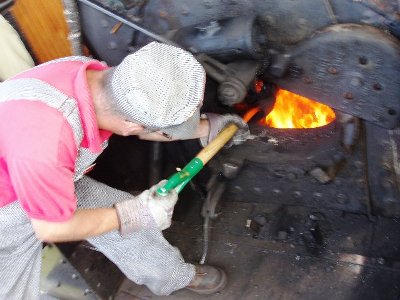
Researchers have developed the world's smallest steam engine that works as well as its larger counterpart.
But the heat engine that measures only a few micrometres splutters because of the thermal motions of the smallest particles, which interfere with its running.
Although this cannot be used as yet, the experiment carried out by the researchers at the University of Stuttgart shows that an engine does basically work, even if it is on the microscale.
This means that there is nothing, in principle, to prevent the construction of highly efficient, small heat engines.
The photograph is used for representative purpose only
. . .

"We've developed the world's smallest steam engine, or to be more precise the smallest Stirling engine, and found that the machine really does perform work," said Clemens Bechinger, Professor at the University of Stuttgart.
"This was not necessarily to be expected, because the machine is so small that its motion is hindered by microscopic processes which are of no consequence in the macroworld," he explained.
The disturbances cause the micromachine to run rough and, in a sense, sputter.
In the heat engine invented almost 200 years ago by Robert Stirling, a gas-filled cylinder is periodically heated and cooled so that the gas expands and contracts.
The photograph is used for representative purpose only
. . .

This makes a piston execute a motion with which it can drive a wheel, for example.
"We successfully decreased the size of the essential parts of a heat engine, such as the working gas and piston, to only a few micrometres and then assembled them to a machine," stated another researcher called Valentin Blickle.
The working gas in the Stuttgart-based experiment thus no longer consists of countless molecules, but of only one individual plastic bead measuring a mere three micrometres (one micrometre corresponds to one thousandth of a millimetre) which floats in water.
The photograph is used for representative purpose only
. . .

The physicists replaced the piston, which moves periodically up and down in a cylinder, by a focused laser beam whose intensity is periodically varied.
The researchers replaced the coal fire of an old-fashioned steam engine with a further laser beam that heats the water suddenly, but also lets it cool down as soon as it is switched off.
The physicists are all the more astonished that the machine converts as much energy per cycle on average despite the varying power, and even runs with the same efficiency as its macroscopic counterpart under full load.
The photograph is used for representative purpose only